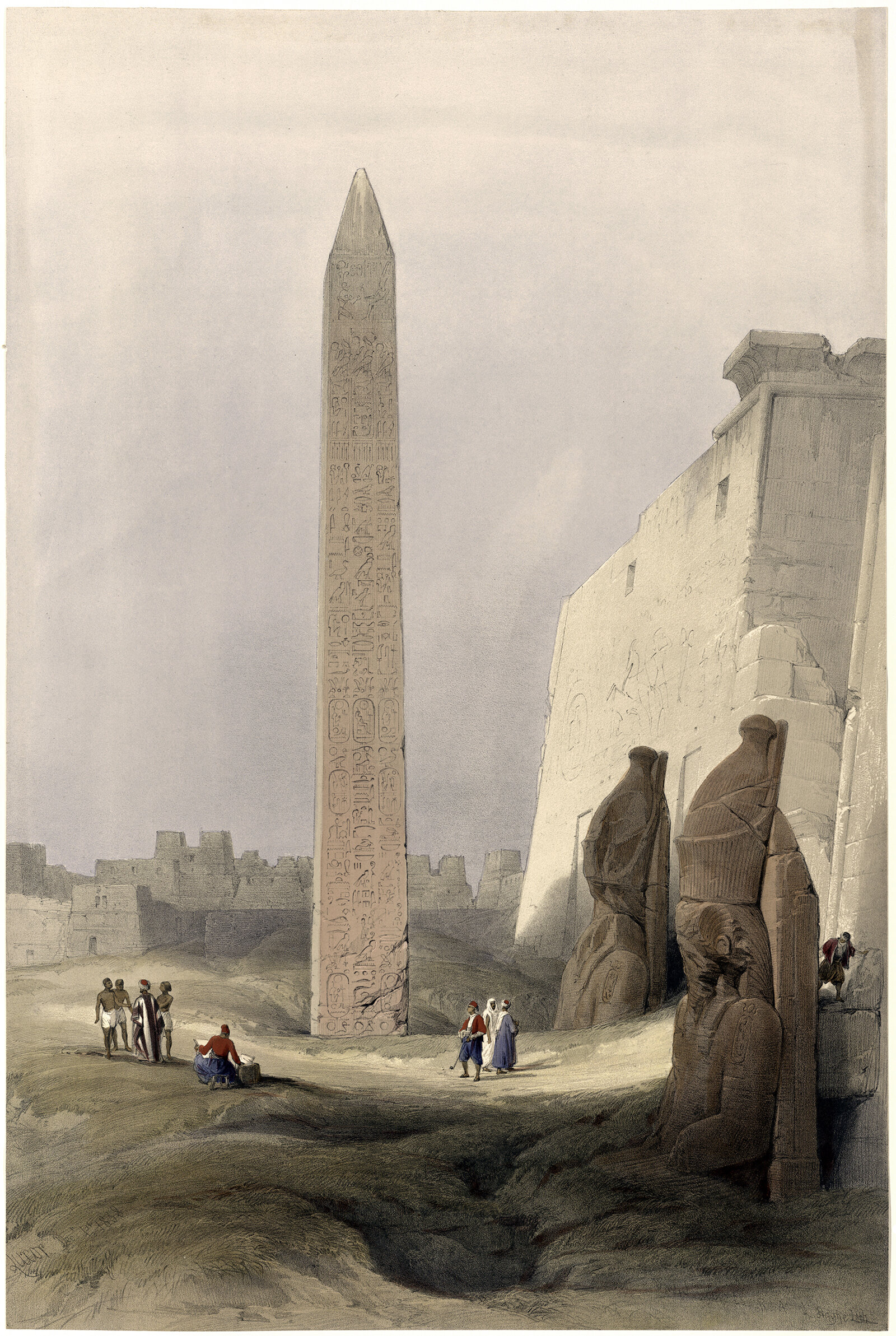The Origin of the Obelisk
Illustration by David Roberts from 1846 showing the Luxor Obelisk at the entrance of the Luxor Temple in Egypt.
This article expands on a section from Chapter VI of the main Verticality narrative, Archetypes.
I was recently on a trip to Washington DC, and I went for a run on the National Mall. The centerpiece of the entire complex is the Washington Monument, which is a 169 m (555 ft) stone-faced obelisk. The monument is strikingly simple and quite effective at announcing its presence to the surrounding area. It got me thinking about the obelisk form, and how its meaning has changed over the centuries. What was once an integral part of a temple complex has become a singular expression of verticality.
The form of the obelisk can be traced back to Ancient Egypt. It’s a tall, thin pillar of stone, square or rectangular in plan and slightly tapered, with a small pyramid at its summit. The Ancient Egyptians carved these monoliths from a single piece of stone and usually covered them in sculptural relief. Obelisks symbolized the sun god Ra, and they were most commonly erected in pairs at the entrance of a temple. Verticality is alive and well here; the Ancient Egyptians believed that a tower denoted height, as well as a rising up above common levels of life or society, so it makes sense that their obelisks symbolized a deity.[1] Furthermore, the form of the obelisk can be seen as a tall, slender platform that serves to raise up a pyramid to the sky, effectively removing it from the surface and placing it in the sky, which is also fitting for a deity.
Ancient Egyptian obelisks can be seen as an evolution of the megalith, which is an upright stone placed on the surface of the earth. These are the oldest human constructions we know of, and they symbolize the upright human body. We humans stand upright, in defiance of gravity, and the act of placing an upright stone on a landscape externalizes this defiance. It also marks a place and makes it special. The Ancient Egyptians took this megalith concept and combined it with their pyramids to develop the obelisk.
Illustration by David Roberts showing the Obelisk of Alexandria in Egypt.
For the Ancient Egyptians, a pyramid symbolized a link between heaven and earth. The form of a pyramid points up to the sky, and the peak symbolizes heaven on earth, much like the peak of a mountain. This explains why they used pyramids as tombs for their kings. The obelisk also symbolized a link between heaven and earth, because it utilized the pyramid form and raised it high above the ground. This explains why they placed a pair of obelisks at the entrance of their temples. A temple symbolizes a heavenly place on earth, and entering a temple is leaving the earthly realm for the heavenly realm. Since obelisks symbolized a link between heaven and earth, they were perfectly suited for the entrance to a temple.
Over time, however, the temples turned to ruins, and many obelisks were taken from Egypt and relocated around the world. Because of this, the original symbolism was broken and they became singular expressions of height, much like the megaliths that preceded them. The illustrations throughout this post show this. Each is a different example of a ruined obelisk, orphaned and standing solo on the landscape. These monoliths no longer symbolize a transition between the earthly realm and the heavenly realm, but they do retain the symbolism of a megalith. They stand in defiance of gravity, and they symbolize an externalization of the human need for verticality. Fast-forward to modern times, and the obelisk form still carries this meaning.
Illustration by David Roberts of the Obelisk at Heliopolis in Egypt.
The Washington Monument is just one example of this. It does three distinct things to immortalize the man it was built for. First, it marks the landscape and makes the place it stands on special. The Washington Monument is located at the heart of the National Mall, so it symbolizes how important George Washington was to the early history of the country. Second, it stands upright, in defiance of gravity. This symbolizes the man himself and his memory, still alive and well in the minds of the American people. Third, it uses verticality to assert its importance on the surrounding landscape. The tower form creates a landmark that can be seen for miles around, and it serves to orient anyone who can see it. This act of verticality underscores its importance and reinforces all three meanings behind the modern obelisk form.
Check out other posts about architecture here.
[1]: Cirlot, J. E. A Dictionary of Symbols. Translated by Jack Sage. Second ed. London: Routledge & Kegan Paul Ltd, 1971. 344.



